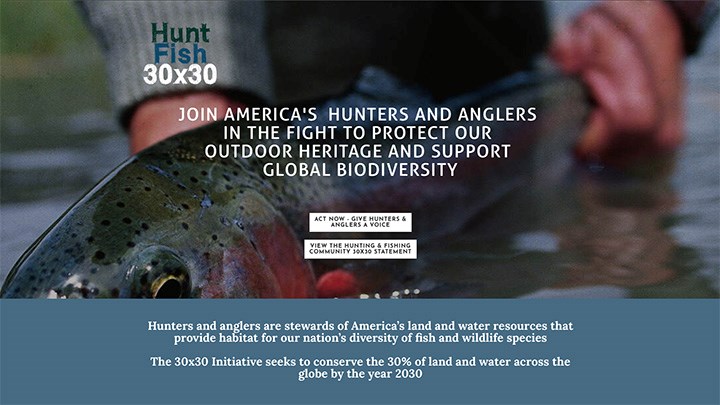
by Erica Tergeson, Senior Advisor, NRA Institute for Legislation Action - Friday, July 16, 2021

Recently there has been a lot of talk about the 30 by 30—specifically the goal of conserving 30 percent of our nation’s lands and waters by 2030. President Biden recently signed an executive order (Executive Order No. 14008) directing his Administration to achieve this goal. But the devil is in the details … and in this case, there are no details. To date there have only been a handful of measures mentioned by the Administration as contributing to the 30x30 effort.
First, the Department of the Interior’s press release on the subject states, “The U.S. Geological Survey (USGS) reports that only 12 percent of lands are permanently protected.” The 12 percent identified by the USGS accounts for areas in the United States that are preserved, not conserved. The USGS defines these lands as “dedicated to the preservation of biological diversity” and only includes designations such as wilderness and national monuments—the most restrictive in the United States.
Second, the Biden Administration mentioned 30x30 as one of the reasons that several wilderness bills should be passed in the House of the Representatives. By these two measures, only the most restrictive land management designations will be considered to contribute. This could mean 30x30 will be used as an excuse to lock up public and private lands and throw away the key.
Federal lands, which are permanently protected from almost all forms of development, should no doubt count and already make up 28 percent of the United States. This number doesn’t include the numerous other protected lands such as state parks and game lands. According to the Congressional Research Service, if you total all lands conserved in the United States, including federal state and private, it totals 889 million acres—roughly 39 percent of our great country. Sportsmen and all Americans should be applauded for this—not told that it isn’t good enough. There is certainly more that can be done, but the focus should be on quality, not quantity.
The NRA has been out front on this issue—We’ve raised the alarm in California and testified before the U.S. Congress (you may watch the forum here) pointing out the facts, the lack of detail in the Executive Order and the incredible conservation accomplishments already made in the United States.
To further protect against misguided extremists using “conservation” as an excuse to lock up land, the NRA joined a coalition of sportsmen’s groups called “Hunt Fish 30x30” to ensure sportsmen have a voice. Rather than shutting down public access and economic opportunity for rural communities, the coalition advises that any 30x30 measures come in the form of science-based, community-supported wildlife conservation efforts, which have a proven track record of success.
In advancing America’s renowned, sustainable-use conservation policy—the North American Model of Wildlife Conservation (NAMWC)—the goal is to ensure sportsmen’s interests and contributions are part of the decision-making process. It is also imperative that those pushing 30x30 measures work with hunting and fishing groups, private and public landowners, local governments and small businesses that rely on access to lands. As the Hunt Fish 30x30 notes, preservation, protection and implementation of wilderness designations certainly should not be an automatic move across the board.
The National Rifle Association is supportive of efforts that conserve our nation’s great wildlife and the habitat in which it lives; after all, Teddy Roosevelt was a proud member of the NRA. America has done more to conserve our lands than any other nation in the world. The North American Model of Wildlife Conservation is the most successful in the world—and sportsmen and women have made this happen. We should be proud of what we have achieved in the United States and build on this success—not tear it down.
E-mail your comments/questions about this site to:
[email protected]
Proudly supported by The NRA Foundation and Friends of NRA fundraising.
